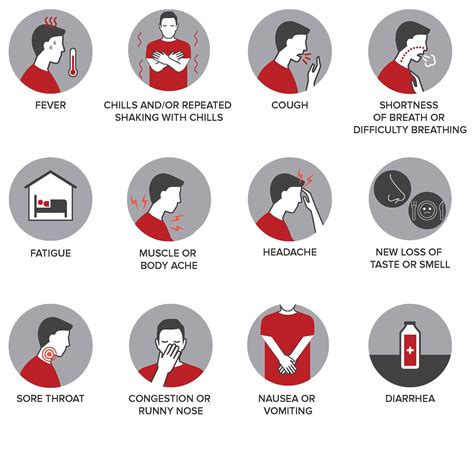Intro
Learn about Viral Upper Respiratory Infection symptoms, causes, and treatments, including common cold, flu, and bronchitis, to manage respiratory viruses and infections effectively.
The common cold, also known as a viral upper respiratory infection, is a widespread and highly contagious illness that affects millions of people worldwide every year. It is estimated that the average adult contracts a cold two to three times per year, while children may experience even more frequent episodes. The economic impact of the common cold is substantial, with billions of dollars spent annually on over-the-counter medications, doctor visits, and lost productivity. Despite its prevalence, the common cold remains a poorly understood and often frustrating condition for those affected.
The symptoms of a viral upper respiratory infection can vary in severity and duration, but typically include congestion, sneezing, runny nose, sore throat, and cough. In some cases, a cold may also be accompanied by fatigue, headache, and muscle aches. While these symptoms can be uncomfortable and disruptive to daily life, they are usually self-limiting and resolve on their own within a week to ten days. However, in certain individuals, such as the elderly, young children, and those with underlying health conditions, a cold can lead to more serious complications, such as pneumonia or bronchitis.
Understanding the causes and mechanisms of viral upper respiratory infections is crucial for developing effective prevention and treatment strategies. Research has identified over 200 different viruses that can cause the common cold, with rhinoviruses being the most common culprit. These viruses are highly contagious and can be spread through the air, as well as through contact with contaminated surfaces and objects. Once a virus enters the body, it triggers an immune response, which can lead to the production of pro-inflammatory chemicals and the activation of immune cells. This immune response is responsible for the symptoms we experience during a cold, and it plays a critical role in helping the body to fight off the infection.
Causes and Risk Factors

Types of Viruses
There are several different types of viruses that can cause viral upper respiratory infections, including: * Rhinoviruses: These are the most common cause of the common cold and are responsible for up to 50% of all cases. * Coronaviruses: These viruses are known to cause a range of respiratory illnesses, from the common cold to more severe conditions like SARS and MERS. * Adenoviruses: These viruses can cause a range of symptoms, including congestion, sore throat, and fever. * Respiratory syncytial virus (RSV): This virus is a common cause of respiratory illness in young children and can also affect adults.Symptoms and Diagnosis

Diagnosing a viral upper respiratory infection is typically based on a physical examination and a review of symptoms. In some cases, a doctor may order additional tests, such as a throat culture or a chest X-ray, to rule out other conditions or complications.
Treatment Options
While there is no cure for the common cold, there are several treatment options available to help manage symptoms and reduce their severity. These include: * Over-the-counter medications, such as pain relievers and decongestants * Prescription medications, such as antiviral drugs and antibiotics * Home remedies, such as rest, hydration, and steam inhalation * Alternative therapies, such as herbal supplements and acupuncturePrevention and Prevention Strategies

Vaccination and Immunization
While there is no vaccine available to prevent the common cold, there are several vaccines that can help protect against other respiratory illnesses, such as influenza and pneumonia. These vaccines are typically recommended for individuals who are at high risk of developing complications, such as the elderly, young children, and those with underlying health conditions.Complications and Long-Term Effects

Chronic Conditions and Comorbidities
Individuals with underlying health conditions, such as asthma or chronic obstructive pulmonary disease (COPD), are at increased risk of developing complications from a viral upper respiratory infection. Additionally, certain comorbidities, such as heart disease or diabetes, can increase the risk of developing serious complications.Current Research and Future Directions

Emerging Trends and Technologies
Some emerging trends and technologies in the field of viral upper respiratory infections include: * Personalized medicine and targeted therapies * Gene editing and gene therapy * Nanotechnology and drug delivery systems * Artificial intelligence and machine learningWhat is the most common cause of the common cold?
+Rhinoviruses are the most common cause of the common cold, responsible for up to 50% of all cases.
How can I prevent getting a cold?
+Preventing a cold requires a combination of good hygiene practices, a healthy lifestyle, and awareness of risk factors, including washing hands frequently, avoiding close contact with someone who is already infected, and getting enough sleep and practicing stress-reducing techniques.
What are the symptoms of a viral upper respiratory infection?
+The symptoms of a viral upper respiratory infection can vary in severity and duration, but typically include congestion, runny nose, sneezing, sore throat, and cough.
We hope this article has provided you with a comprehensive understanding of viral upper respiratory infections, including their causes, symptoms, treatment options, and prevention strategies. If you have any further questions or would like to share your experiences with the common cold, please don't hesitate to comment below. Additionally, if you found this article informative and helpful, please consider sharing it with your friends and family on social media. By working together, we can promote greater awareness and understanding of this common and often frustrating condition.
